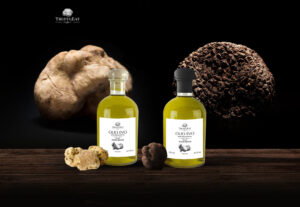
SINGAPORE: On my last trip to Singapore, I had lunch at Vasunthara Ramasamy’s home. We had previously connected through our shared love of food on Instagram before my move to Melbourne, when she was still working as a teacher.
Five years later, I was at her table, reconnecting over thosai and chutneys, marvelling that she was able to leave her 9-to-5 job and run her private dining experience, Cutlery Optional, full-time.
Ramasamy’s story is just one of many success stories of home cooks turning their passion for cooking into their main source of income. Prices at these coveted dinners can go up to S$150 (US$110) per head, yet as evidenced by the long waitlists – up to a year for more popular kitchens – people in Singapore are more than willing to pay.
Why is home-cooked food served up in a domestic setting so irresistible to Singaporeans, who are known for being notoriously price-sensitive? For the same price, why not eat at a restaurant instead?
A UNIQUE DINING EXPERIENCE
Part of the draw is, quite simply, that the food that one gets at these experiences is different from what you may find at restaurants.
A common misconception is that restaurant cooking is always vastly superior to home cooking. While the skills of restaurant chefs are often impressive, cooking in restaurants has its own limitations.
When I used to work as a restaurant cook, because of the sheer volume of food we were preparing each day, shallots and garlic would be ordered in their pre-peeled state. Also, instead of having to soak dried chillies and blend them painstakingly, we often used store-bought chilli paste.
The edge that private dining cooks have is that they are mostly cooking for intimate groups of up to 12. This allows them to cook without cutting any corners or having to forgo traditional cooking techniques in favour of scalability.
For example, Sam Wong of Lucky House Cantonese Private Kitchen prepares his soup over charcoal stoves. The sight and smell of a pot of soup bubbling over charcoal used to be common to many homes before the mainstream adoption of induction and gas stoves.
According to Wong, because of how fierce charcoal fire is, the flavour of the soup is discernibly more intense.
“It reminds some of my guests of what their majie (Cantonese domestic helpers between the 1930s and 1970s) cooked for them when they were kids,” he said. “They tell me, ‘This is the taste of that soup! I can’t find this anywhere else!’”
Guests may also be able to taste dishes at private dining experiences that are not offered at restaurants. Because the number of diners at a restaurant each night is uncertain, chefs tend towards serving dishes that can store well.
On the other hand, because private chefs know the exact number they are cooking for, they can afford to serve dishes that are more perishable.
Lloyd Matthew Tan, a cookbook author running a Peranakan private dining experience, Perot Rumah, points me towards tauhu masak titek, a close-to-forgotten dish on his menu.
“Because of the soft tofu in it, this soup goes bad easily, [so] restaurants do not tend to serve it. This is why, when my Peranakan guests taste the soup, it brings back a nostalgic yearning, as they have not eaten this dish since their grandmothers passed away,” he said.
AN IMMERSIVE CULTURAL EXPERIENCE
But food makes up only half of the private dining experience. Just like entering a friend’s home, the moment shoes are removed and set aside, one is immersed fully in the world of another.
“The dining plate and the etiquette of eating … all these play a part in translating and transmitting heritage,” says Ramasamy. “As a person from a minority group, it is a great way to introduce people of all walks of life to both my food and my culture.”
Given the intimate nature of the sessions, cooks are able to introduce each dish in detail, with cultural tidbits and personal anecdotes. Bowls of tauhu masak titek at Perot Rumah, for example, are accompanied with stories of how a local-born wife decided to add a robust rempah (spice paste) to the bland tofu that her China-hailing husband was craving for.
While some might argue that a similar experience could be had at a restaurant with well-trained staff, it can never beat having the cook and person with a first-hand connection to the heritage flesh out nuances in your food.
RECONNECTING WITH HOME-COOKED FOOD
Eating a meal at someone’s house also allows diners to relax completely – no need for nervous glances at the snaking queue outside, or any worries about formalities such as dress code.
Wong says, “Sometimes very rich people come to my dinners and they don’t expect to be served. You see them happily serving their wife or their children the food. We would be sharing memories, just joking, or singing together even – they feel like they are in their own home!”
The experience thus transcends the dining component and guests often leave with a sense of intimacy and kinship forged over food.
Perhaps this is a clue as to why home-based private dining experiences have truly taken off in Singapore. In a country where cooking is dwindling as a practice, these dinners soothe a human need: A desire for home, with food at its heart.
Pamelia Chia is the author of the bestselling cookbook Wet Market to Table, and the founder of Singapore Noodles, a newsletter with the mission of keeping Singapore’s food heritage alive.
LISTEN – Heartland Tales: A Peranakan home which is also a lovingly curated museum

